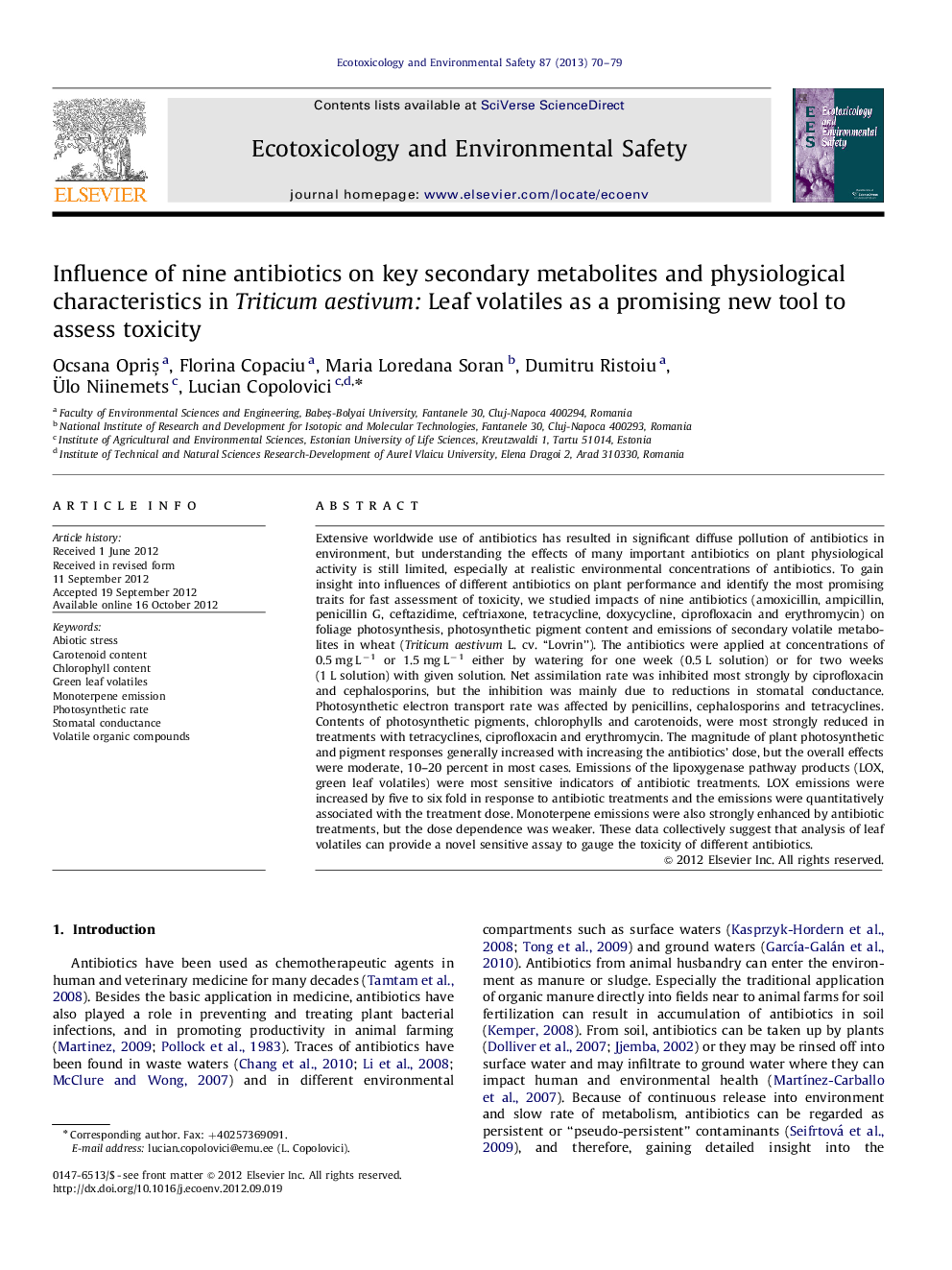| کد مقاله | کد نشریه | سال انتشار | مقاله انگلیسی | نسخه تمام متن |
|---|---|---|---|---|
| 4420622 | 1618976 | 2013 | 10 صفحه PDF | دانلود رایگان |

Extensive worldwide use of antibiotics has resulted in significant diffuse pollution of antibiotics in environment, but understanding the effects of many important antibiotics on plant physiological activity is still limited, especially at realistic environmental concentrations of antibiotics. To gain insight into influences of different antibiotics on plant performance and identify the most promising traits for fast assessment of toxicity, we studied impacts of nine antibiotics (amoxicillin, ampicillin, penicillin G, ceftazidime, ceftriaxone, tetracycline, doxycycline, ciprofloxacin and erythromycin) on foliage photosynthesis, photosynthetic pigment content and emissions of secondary volatile metabolites in wheat (Triticum aestivum L. cv. “Lovrin”). The antibiotics were applied at concentrations of 0.5 mg L−1 or 1.5 mg L−1 either by watering for one week (0.5 L solution) or for two weeks (1 L solution) with given solution. Net assimilation rate was inhibited most strongly by ciprofloxacin and cephalosporins, but the inhibition was mainly due to reductions in stomatal conductance. Photosynthetic electron transport rate was affected by penicillins, cephalosporins and tetracyclines. Contents of photosynthetic pigments, chlorophylls and carotenoids, were most strongly reduced in treatments with tetracyclines, ciprofloxacin and erythromycin. The magnitude of plant photosynthetic and pigment responses generally increased with increasing the antibiotics’ dose, but the overall effects were moderate, 10–20 percent in most cases. Emissions of the lipoxygenase pathway products (LOX, green leaf volatiles) were most sensitive indicators of antibiotic treatments. LOX emissions were increased by five to six fold in response to antibiotic treatments and the emissions were quantitatively associated with the treatment dose. Monoterpene emissions were also strongly enhanced by antibiotic treatments, but the dose dependence was weaker. These data collectively suggest that analysis of leaf volatiles can provide a novel sensitive assay to gauge the toxicity of different antibiotics.
► We studied the effects of antibiotics from different classes on plant performance.
► Antibiotics reduced foliage photosynthetic pigment contents.
► Volatile emissions can be used for quantitative evaluation of the toxicity.
► Differences among antibiotic classes in secondary metabolites were observed.
Journal: Ecotoxicology and Environmental Safety - Volume 87, 1 January 2013, Pages 70–79